We’d been away for almost a month now but most of the major driving had been confined to the four days getting from Namibia to Zambia. We now had several long driving days ahead of us and a week to get to Kisumu in Kenya on Lake Victoria.
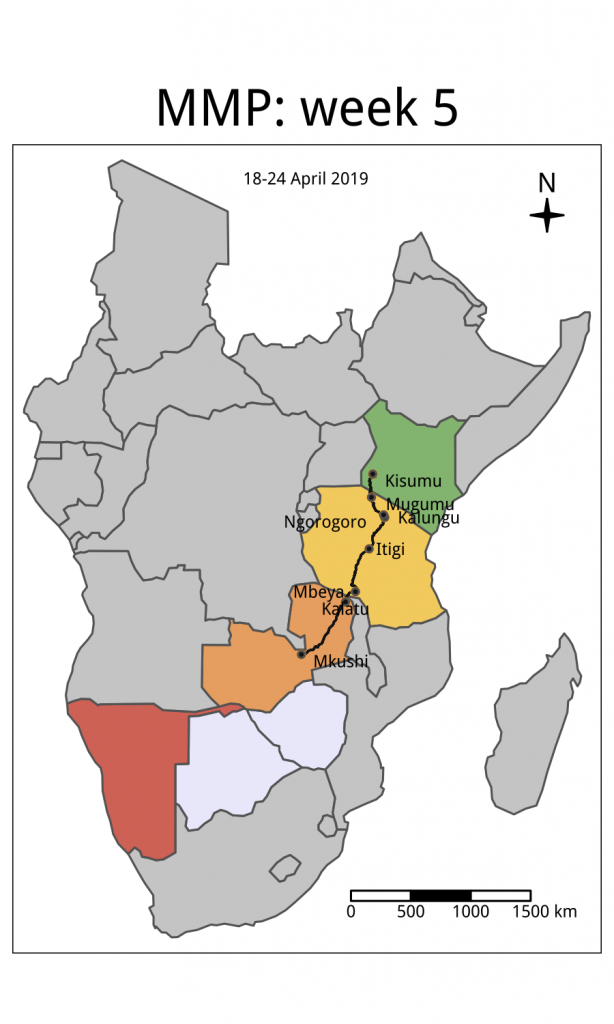
On our map this looked like a long way and, at almost 2,300km, it was. In Namibia we’d managed a couple of days driving of ~800km, but we knew that those were some of the best roads we would meet, as well as some of the least used. It would be impossible to make such good going here. We had little idea of what the roads between Lusaka and Tunduma, on the Tanzania border, were like although we’d heard from a few people that there were stretches with potholes.
In fact, we managed to drive most of the way up to northern Zambia in a day, but it was far from comfortable. The rumours about the road proved well-founded and there was a stretch from Mpika northwards that was very heavy going. What was quite unbelievable were the vehicles that were attempting this route. It’s the main artery into Zambia from Tanzania and the east coast of Africa, so the vast majority of fellow road users were large haulage trucks. These 18 wheelers would slowly swerve and rattle along the disintegrating road. Occasionally, one would be pulled up on the side of the road with a puncture and a couple of times we even saw toppled containers and trucks stuck in the bush without hope of recovery.
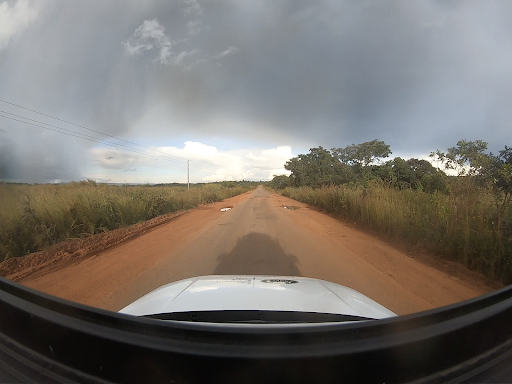
Northern Zambia was expansive and green and there was little evidence of large scale agriculture or infrastructure. We could see the occasional village set back from the road with characteristic mud huts and grass thatch, and we intermittently saw people walking along the road. Bags of charcoal were a constant feature of the roadside, presumably due to the ease of their manufacture and their demand as a fuel in everyday life. When we weren’t being bashed around inside the car, out of the windows we could see mile after mile of green tree heads bubbling out to the mountains in the distance. We fell short of our initial aim of Tunduma and so found a remote campsite to bed down for the night.
We approached the border between Zambia and Tanzania early the next morning. It was now Good Friday and today we were only aiming to get to Mbeya, a few hours drive from the border. As with our previous border crossing, we moved pretty quickly through and thankfully all of our paperwork was spot on, and no issues were raised. We’d arranged our road insurance through the University and had been put in touch with agents in each country to help get our documents to us. In most of the countries we visited it was necessary to have an insurance disc stuck onto the inside of the windscreen and our Tanzanian one had been sent through to Lusaka. We were all set.
The environment changed almost immediately when we entered Tanzania. There were many more people around and the shops took on a different hue. The natural, earthy colours that had accompanied us on the drive from Lusaka were replaced by vibrant, primary colours and there was marked change in the contents of the shops on the roadside. Once we left the town, fields of maize, sorghum, sunflowers and banana spread out from the car, in marked difference to the wilderness of Zambia. Here, agriculture was far more developed and the available land was being put to use providing for the population.
We were entering the Southern Highlands, a picturesque, mountainous region of Tanzania that demarcates it from DRC to the west and Zambia, Malawi and Mozambique to the south.
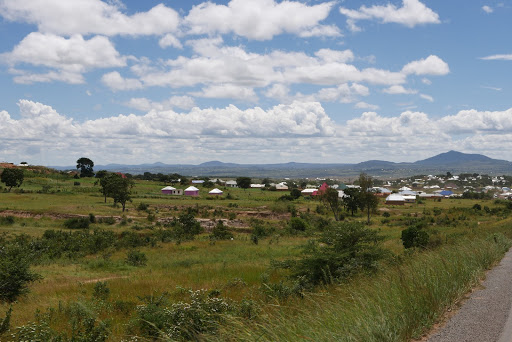
We arrived in Mbeya in time for a late lunch, at which point the heavens opened and we witnessed a three-hour rain storm that flooded the streets and roads and left us with little to do other than sit inside and plan for the next day. We wanted to try to get as far as the Serengeti in the north over the next couple of days and then potentially drive across the fabled plains from east to west on our way to Lake Victoria. We had two options: up through Dodoma on potentially decent roads, but with more traffic, or a slightly shorter route through central Tanzania that our GPS assured us was gravel. We opted for the latter and were immediately vindicated as we set off early the next morning and climbed out of Mbeya on a road that took us high onto the massif.
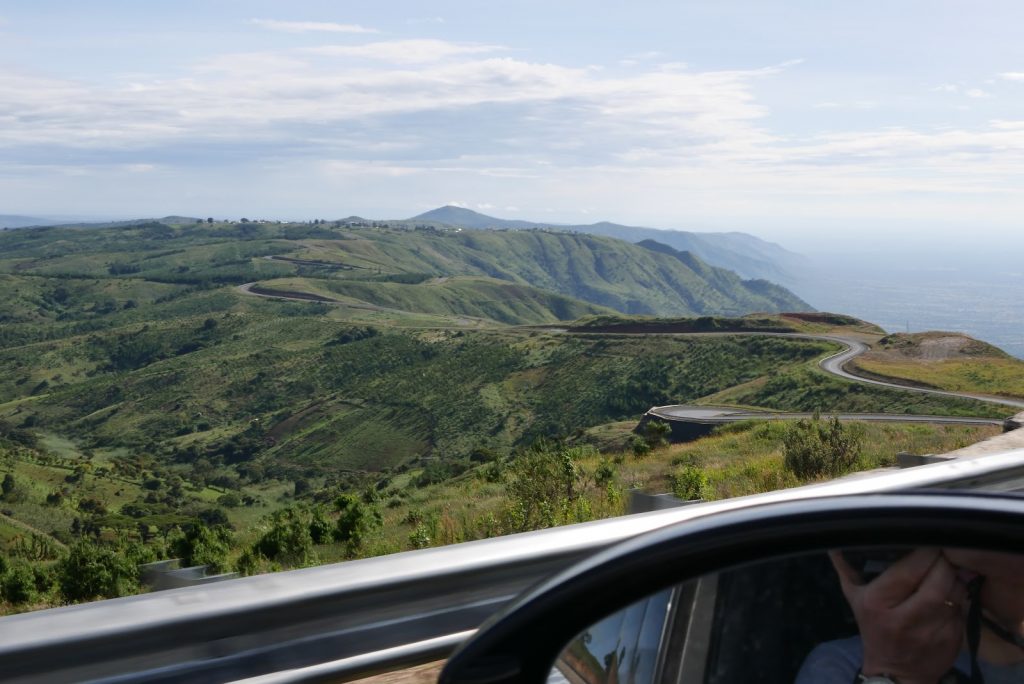
The kindness of strangers
The following day’s drive got us to Karatu on the edge of the Serengeti in time to try to sort out a guide for the next two days’ drive. We met a man called Vincent Malley who, with little or no persuasion, took it upon himself to find someone to help. Normally people do a circular trip around the park, but we were aiming to go one way and then on up to the Kenyan border, which meant that we needed a bespoke option and a guide keen to travel back across the park on their own once we’d finished. Vincent not only found us a very cheap guesthouse to stay at in this most touristic of national park gateway towns, but he also managed to find us someone to guide us through the park for one day. We would visit the Ngorongoro crater on the other day and would be able to pick up a guide at the park gate.
It reminded me of a talk that Fearghal O’Nuallain, last year’s winner of the RGS Land Rover bursary, had given back in November 2018. He’s travelled widely to increase awareness of water issues around the world, and one of the overarching themes of his journeys has been the ‘kindness of strangers’. We were touched that Vincent had taken time out of his day to help us out and didn’t want anything in return for his kindness.
The Ngorongoro and Serengeti were spectacular and a real treat for us. Once we were in Kisumu, Isaac was going to have to leave the project a few days early, so it was a real tonic for the three of us and the car to spend some time seeing the magnificent and unique beauty of this famous wildlife-watching haven.
We followed this road for around 100km when it just fell away to dirt and dust. The next 350km were hard driving but incredibly rewarding, and one of the most fun driving days we’ve had so far. We were on a road that was increasingly remote and empty, but which was never far from some sort of civilization. The beginning section of the road was under construction, and we passed along the edge of a larger pathway that was being made ready to tarmac – more evidence of road construction in Africa.
We continued along the track through russet red dust and luscious green vegetation. At one point we trailed the edge of the Rungwa National Park and there were long sections where we were the only people on the road, surrounded by the vistas of the incredible Tanzanian bush. We reached Itigi late in the afternoon and found somewhere to stay and headed out for an evening street meal of chip omelette.
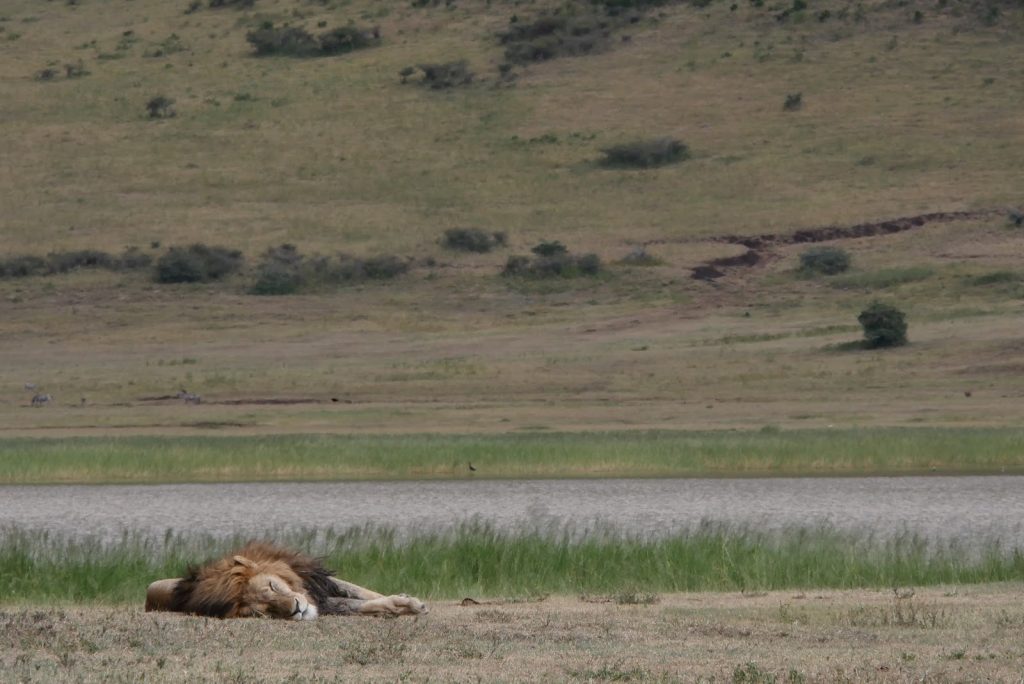
After a night in Muguwu on the edge of the park we drove the final couple of hundred kilometers to the Kenyan border at Isebania. Again, the crossing was smooth. This time our insurance disc was waiting for us at a bus ticket booth just outside the border, having been couriered there for us from Nairobi, much to the disbelief of the insurance touts. So we were through our final border rapidly and on into Kenya for the final part of our journey and the opportunity to work on mosquito sequencing with colleagues in Kisumu.
